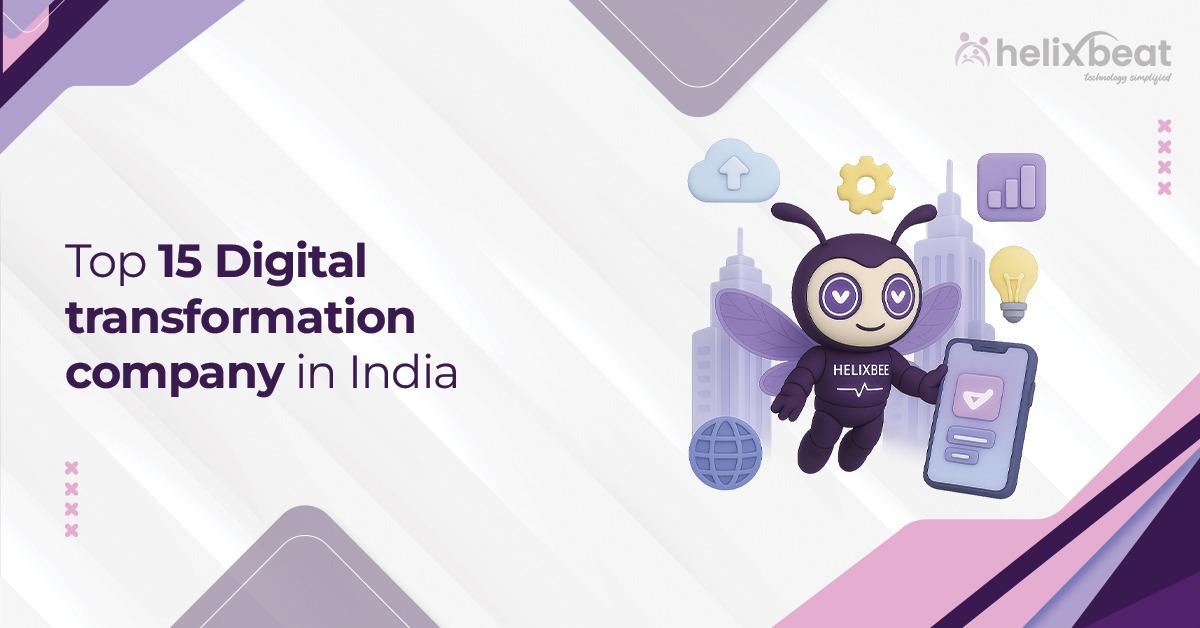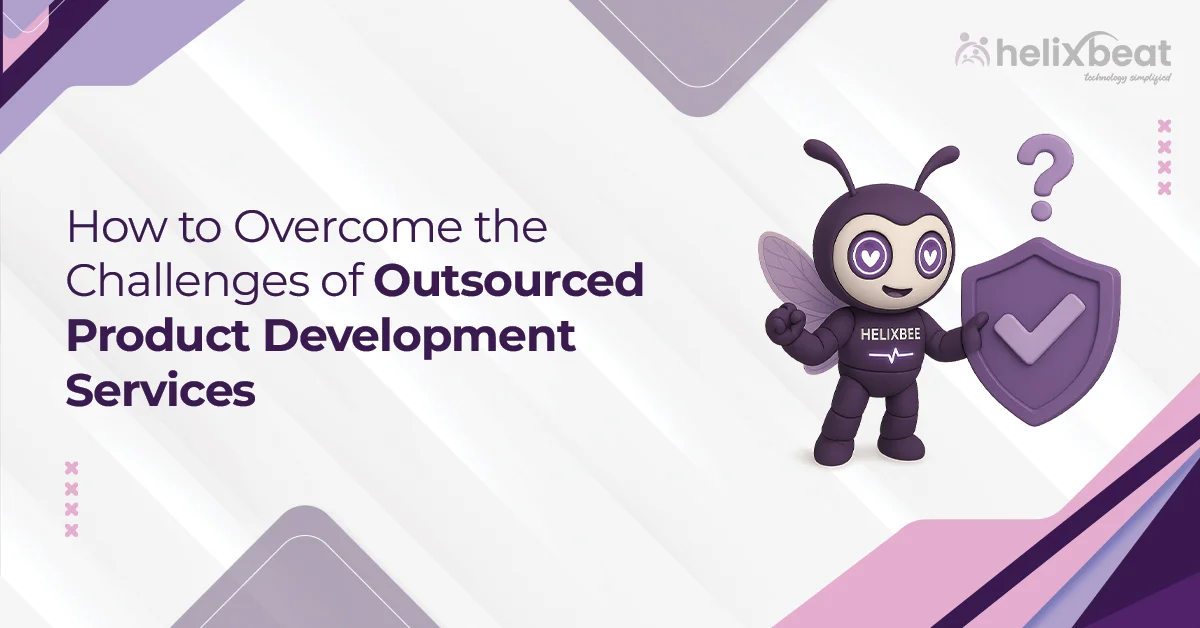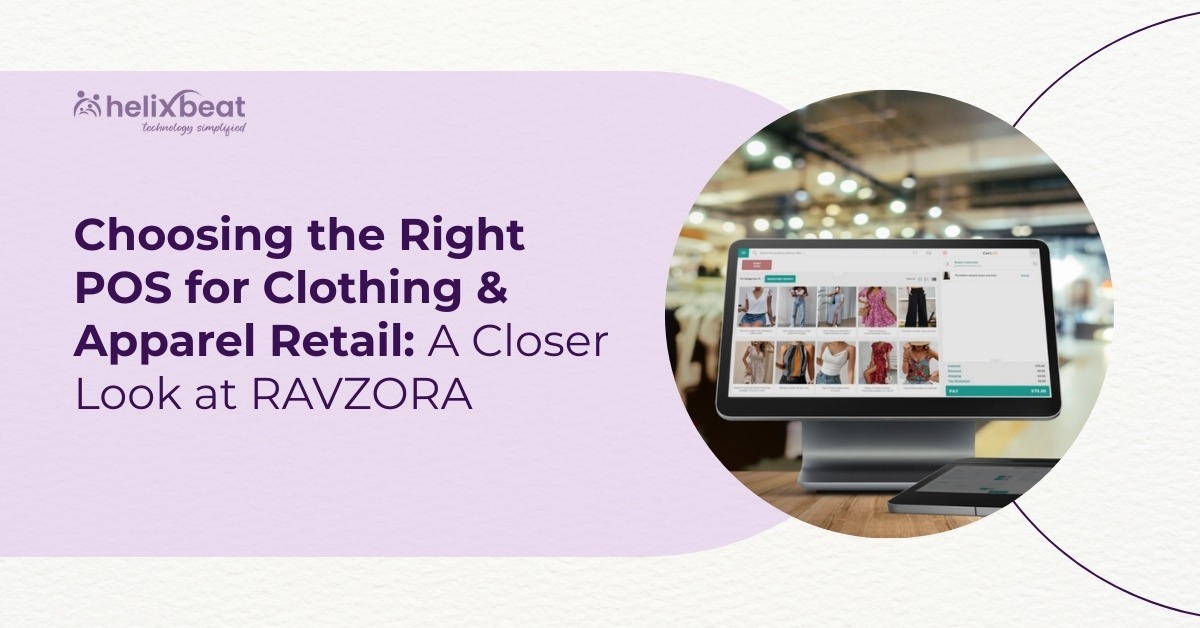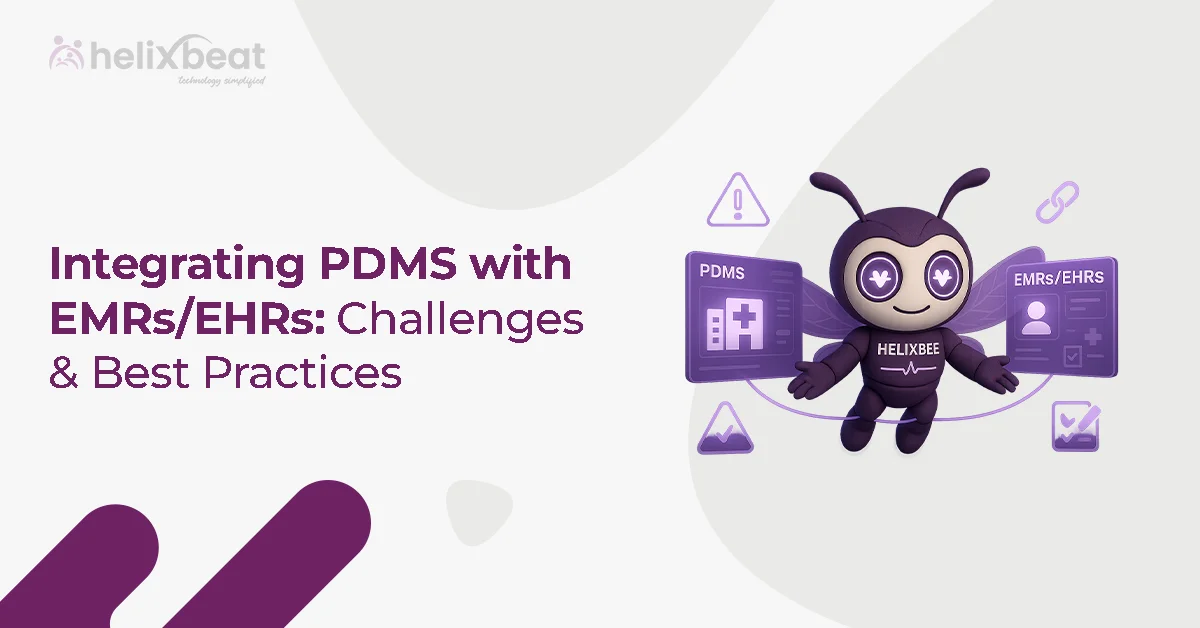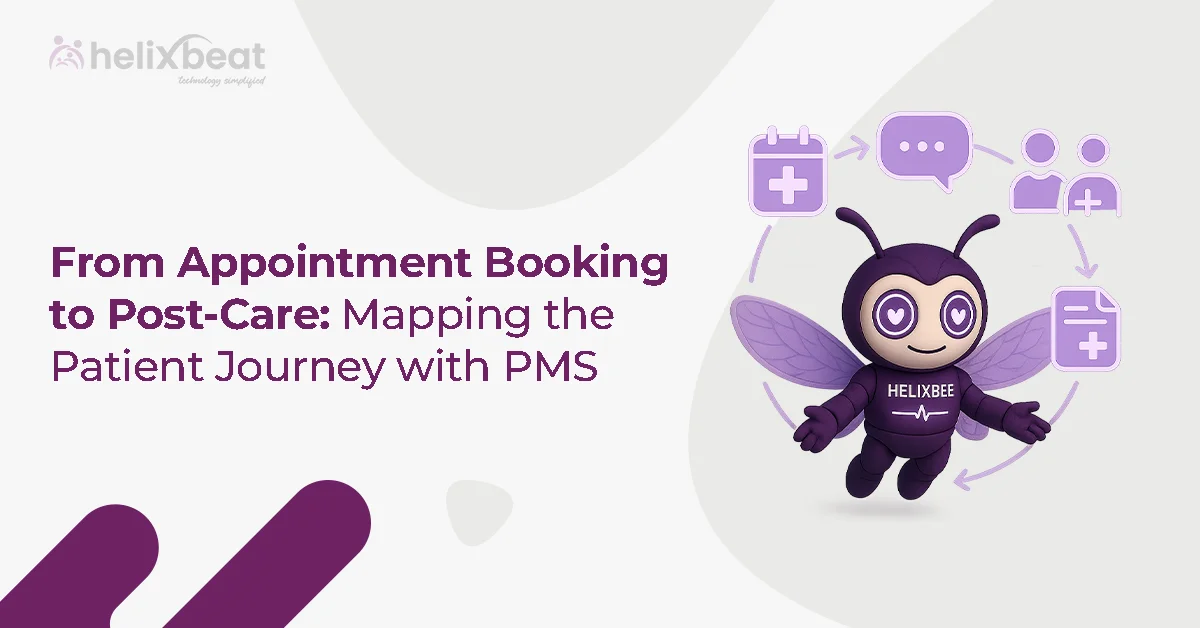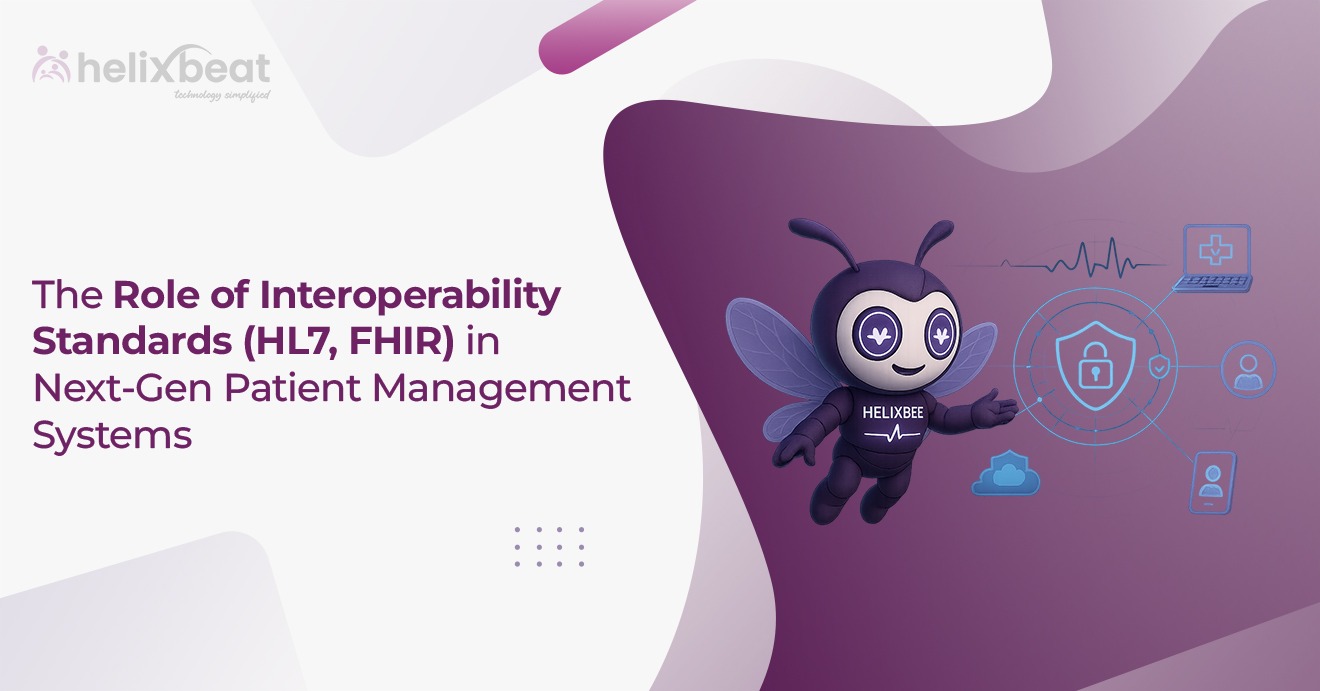The global wearable medical devices market is soaring. It is expected to expand at a compound annual growth rate (CAGR) of 14.6% from 2023 to 2030. This rise is fueled by increasing health consciousness among people who want to track and manage their well-being using smart technology.
However, healthcare providers remain largely underutilized by the vast amounts of continuous and real-time patient data generated by wearable health monitoring devices. If properly harnessed, this data could transform patient care by enabling more informed decisions and personalized treatment plans. So, why isn’t this happening on a larger scale?
The answer lies in integration challenges. Most hospitals and healthcare facilities rely on outdated electronic health records (EHR) and electronic medical records (EMR) systems. These systems need time, resources, and financial investment to be compatible with the hundreds of wearable health monitoring devices available today. Many healthcare providers struggle to justify this cost, slowing the widespread adoption of wearable technology in clinical settings.
But what if a solution existed that could seamlessly fuse wearable device data with existing medical records and workflows? Enter FUSION is designed to bridge the gap between wearable health monitoring devices and healthcare systems. In this article, we’ll find how wearable health monitoring devices, when combined with FUSION, can change patient care, optimize healthcare operations, and unlock new business opportunities.
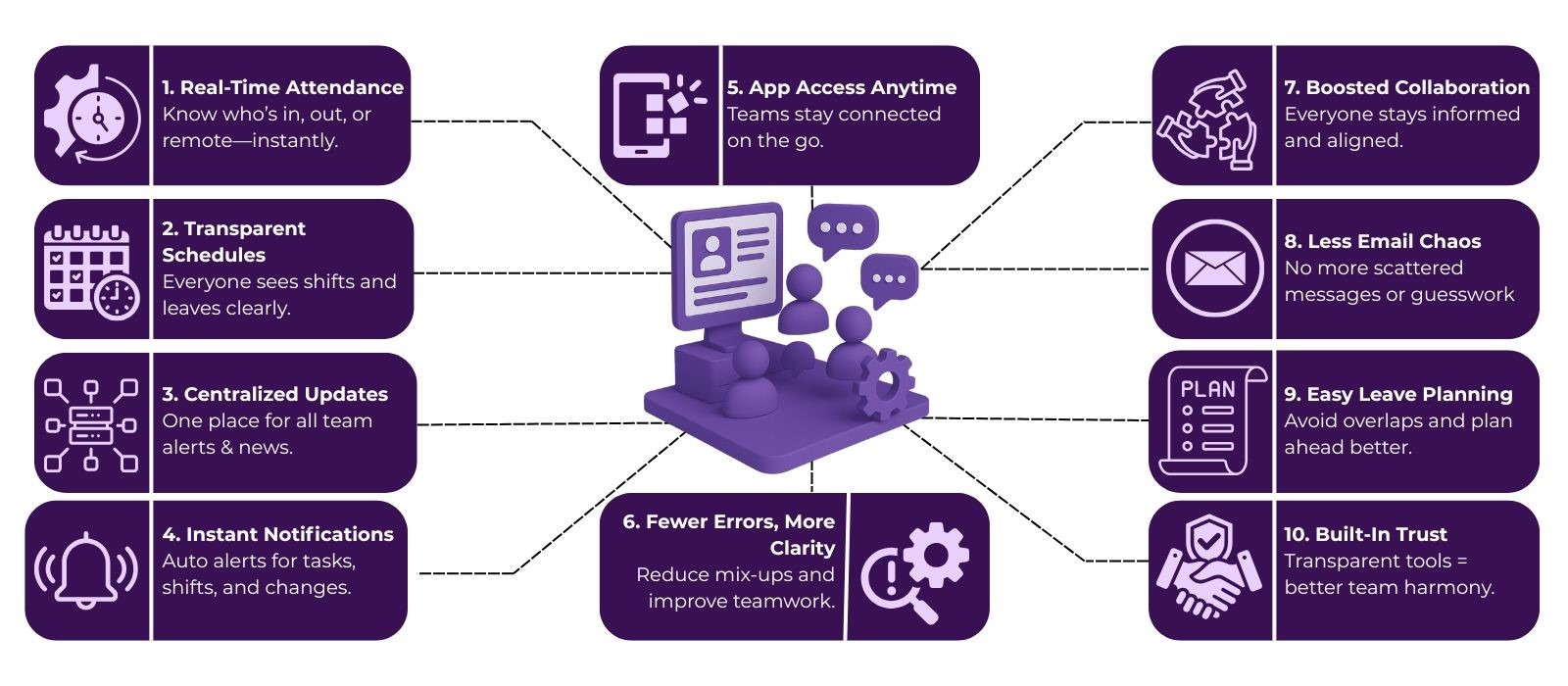
Table of Contents
Understanding the Importance of Data in Wearable Health monitoring Devices in Hospitals
Wearable health monitoring devices have redefined patient care, bridging the gap between in-hospital monitoring and home-based healthcare. Their ability to continuously collect and transmit patient data enables doctors to make informed decisions, reducing hospital readmissions and improving patient outcomes.
Key Wearable Health Monitoring Devices Used in Hospitals
Hospitals worldwide are integrating a variety of wearables to track and manage patient health. Some of the most widely used devices include:
- Continuous Glucose Monitors (CGMs) – Devices like the Dexcom G6 and Freestyle Libre provide real-time glucose readings for diabetic patients, eliminating the need for frequent finger-prick tests.
- ECG Wearables – Smartwatches like the Apple Watch Series 8 and Withings ScanWatch detect irregular heart rhythms and send ECG readings directly to healthcare professionals.
- Blood Pressure Monitors – Devices such as Omron HeartGuide provide continuous blood pressure monitoring, allowing doctors to adjust treatment plans accordingly.
- Smart Patches & Biosensors – Wearable patches like BioIntelliSense BioSticker monitor multiple health parameters, including temperature, respiration, and hydration levels, ideal for post-operative and critical care patients.
- Wearable Pulse Oximeters – Devices like the Masimo MightySat measure oxygen saturation, a critical metric for patients with respiratory conditions.
- Sleep Monitors – Fitbit Sense and Oura Ring track sleep patterns, heart rate variability, and stress levels, providing valuable insights for managing sleep disorders.
Each of these devices generates a vast amount of real-time patient data. However, without a smooth data exchange system, hospitals struggle to leverage this information effectively.
Why Smooth Data Exchange is Essential in Healthcare
Real-Time Patient Monitoring and Emergency Response
Wearable devices provide continuous monitoring, but real-time data exchange ensures that critical alerts reach healthcare providers immediately. If a cardiac patient wearing an ECG monitor experiences arrhythmia, the device must instantly notify the hospital’s emergency response team. Delays in data transmission can lead to life-threatening consequences.
Reduction in Manual Data Entry and Errors
Traditionally, nurses and doctors manually record patient vitals, which can lead to errors and inconsistencies. Wearable devices that integrate with Electronic Health Records (EHRs) eliminate this problem by automatically updating patient data, improving accuracy and reducing the workload on hospital staff.
Enhanced Personalized and AI-Driven Healthcare
AI-powered analytics thrive on continuous, accurate data. When wearables seamlessly communicate with hospital AI systems, predictive algorithms can detect patterns and predict potential health risks. For example, an AI model analyzing data from a patient’s smartwatch might detect subtle variations in heart rate that indicate early signs of atrial fibrillation, prompting early intervention.
Facilitating Remote Patient Monitoring and Telemedicine
Post-operative patients, elderly individuals, and those with chronic diseases can be monitored remotely through wearable devices. Data exchange between the wearable and the hospital system ensures that doctors receive timely updates without requiring frequent hospital visits. This reduces healthcare costs, prevents unnecessary hospitalizations, and improves patient convenience.
Improved Interoperability Between Devices and Systems
Different manufacturers produce wearable devices in various formats, making integration with hospital systems challenging. Smooth data exchange allows hospitals to integrate data from multiple devices—such as an Apple Watch, a Fitbit heart rate monitor, and a Dexcom glucose sensor—into a single platform, providing a comprehensive view of patient health.
Optimized Critical Care and ICU Monitoring
In intensive care units (ICUs), real-time data exchange is vital. Patients on life-supporting devices like ventilators and heart monitors need continuous surveillance. Wearables that instantly relay oxygen saturation, blood pressure, and ECG readings to hospital dashboards help doctors make quick, informed decisions.
Ensuring Data Security and Compliance
Since wearable devices collect sensitive patient information, secure data exchange is crucial. Hospitals must comply with regulations such as HIPAA to protect patient privacy. Encryption, authentication protocols, and secure cloud storage solutions ensure that data remains confidential and protected from cyber threats.
Reducing Healthcare Costs and Hospital Overcrowding
By enabling remote monitoring and automated health tracking, wearable health devices help hospitals optimize resources. Patients with minor health conditions can be monitored at home, reducing unnecessary hospital visits and minimizing overcrowding in emergency rooms.
Supporting Medical Research and Clinical Trials
Data from wearables can be used for large-scale medical research and clinical trials. Hospitals and pharmaceutical companies rely on real-world patient data to study disease progression, test new treatments, and improve drug development. A well-integrated data exchange system ensures researchers have access to high-quality, real-time data.
How does FUSION enable seamless data exchange between wearable health monitoring devices and healthcare providers?
1. Standardized Data Format for Interoperability
Wearable health monitoring devices—from smartwatches to glucose monitors—collect a vast amount of health data, including heart rate, blood pressure, oxygen levels, activity levels, sleep patterns, and more. However, different manufacturers use different formats, making it difficult for healthcare systems to interpret and integrate this data effectively. FUSION standardizes the data format, ensuring that information from various wearable devices follows a uniform structure. This eliminates inconsistencies and makes data integration smooth across multiple Electronic Health Record (EHR) systems.
2. Seamless Integration with Healthcare Systems
FUSION acts as a bridge between wearable devices and hospital databases, EHR systems, and cloud-based health platforms. It ensures that data flows effortlessly from a patient’s wearable device to their doctor’s dashboard, enabling real-time monitoring and early detection of health risks. This integration helps:
- Doctors receive instant health updates instead of waiting for periodic check-ups.
- Hospitals automate alerts for critical health conditions, reducing emergency response time.
- Patients share their long-term health data, allowing for better treatment planning.
3. Secure and Real-Time Data Transmission
Security is a major concern in healthcare data exchange. FUSION ensures encrypted, real-time data transmission using secure communication protocols. This prevents unauthorized access and maintains patient confidentiality. Additionally, cloud-based storage allows doctors to access patient health records anytime, improving the efficiency of remote consultations and telemedicine services.
4. AI-Driven Data Insights for Personalized Care
FUSION helps healthcare providers analyze wearable data for deeper insights. Instead of just displaying raw numbers, AI can detect early signs of health deterioration, predict possible conditions, and offer personalized treatment plans. For instance:
- An AI-powered system can identify irregular heart rhythms and alert a cardiologist before a potential stroke occurs.
- A diabetic patient’s continuous glucose monitoring (CGM) device can suggest diet adjustments based on sugar level trends.
5. Patient Empowerment and Self-Tracking
FUSION doesn’t just benefit healthcare providers—it also empowers patients by giving them direct access to their own health data. Patients can:
- Track their vitals in real-time via mobile apps.
- Receive automated health recommendations for exercise, sleep, and medication adherence.
- Set up alerts for abnormal readings, prompting them to take action or consult a doctor.
This self-awareness encourages a proactive approach to health management, reducing hospital visits and medical costs in the long run.
6. Enhancing Remote Patient Monitoring and Telemedicine
For patients with chronic conditions like diabetes, hypertension, or heart disease, FUSION facilitates remote monitoring, allowing doctors to track their health trends without frequent hospital visits. This is particularly beneficial for elderly patients and those in remote areas, where access to healthcare is limited. Telemedicine platforms integrated with FUSION can enable virtual consultations based on real-time wearable data, ensuring timely interventions.
7. Chronic Disease Management
Wearable health monitoring devices integrated with an FHIR server can significantly improve chronic disease management by enabling continuous remote monitoring and proactive interventions. Patients with diabetes, hypertension, heart disease, and respiratory conditions benefit from real-time tracking, personalized alerts, and doctor interventions.
How FUSION improve chronic disease management:
- Continuous blood glucose monitoring (CGM) for diabetics, sending real-time sugar level updates to doctors.
- Blood pressure monitoring for hypertensive patients, with alerts for sudden spikes or drops.
- ECG and oxygen level tracking for heart disease patients, reducing emergency hospital visits.
- AI-based trend analysis using FHIR resources to detect early warning signs of disease progression.
By integrating FHIR with wearable health monitoring devices data, healthcare providers can reduce hospital readmissions, optimize treatment plans, and enhance patient outcomes in chronic disease management.
Final thoughts
Wearable health monitoring devices are changing healthcare. But without seamless data exchange, their full potential remains untapped. That’s where FUSION steps in.
FUSION connects wearable health monitoring devices with hospital systems in real-time. Doctors get instant updates. Patients receive better, faster care. Chronic conditions are managed proactively. Emergency responses become quicker.
It also puts health data in patients’ hands. They can track vitals, spot issues early, and take control of their well-being.
The future of healthcare is smart, connected, and patient-focused. With FUSION, wearable health moniotring devices don’t just track health—they help save lives.
FAQs
- How do wearable tech devices improve health monitoring?
Wearable devices track real-time health metrics like heart rate, glucose levels, and oxygen saturation, allowing early detection of health issues and better patient care.
2. How can healthcare apps seamlessly integrate with wearable devices, electronic health records (EHRs), and medical data platforms?
By using standardized data formats, APIs, and platforms like FUSION, healthcare apps can sync wearable device data with EHRs for real-time monitoring and better decision-making.
3. Can wearable devices help reduce hospital readmissions?
Yes. Continuous monitoring allows early detection of health issues, reducing the need for emergency hospital visits.
4. Do wearable devices improve chronic disease management?
Yes. Patients with diabetes, heart disease, and hypertension benefit from real-time tracking and AI-driven health insights.
5. Is data security a concern when integrating wearables with healthcare systems?
Yes. Encryption, authentication, and compliance with regulations like HIPAA and GDPR are essential to protect patient data.
6. Do hospitals need to upgrade their systems to integrate wearable health data?
Yes. Many EHRs require updates to support seamless data exchange from multiple wearable devices.
7. Can wearable devices support telemedicine and remote healthcare?
Yes. They enable doctors to monitor patients remotely, reducing the need for frequent in-person consultations.







